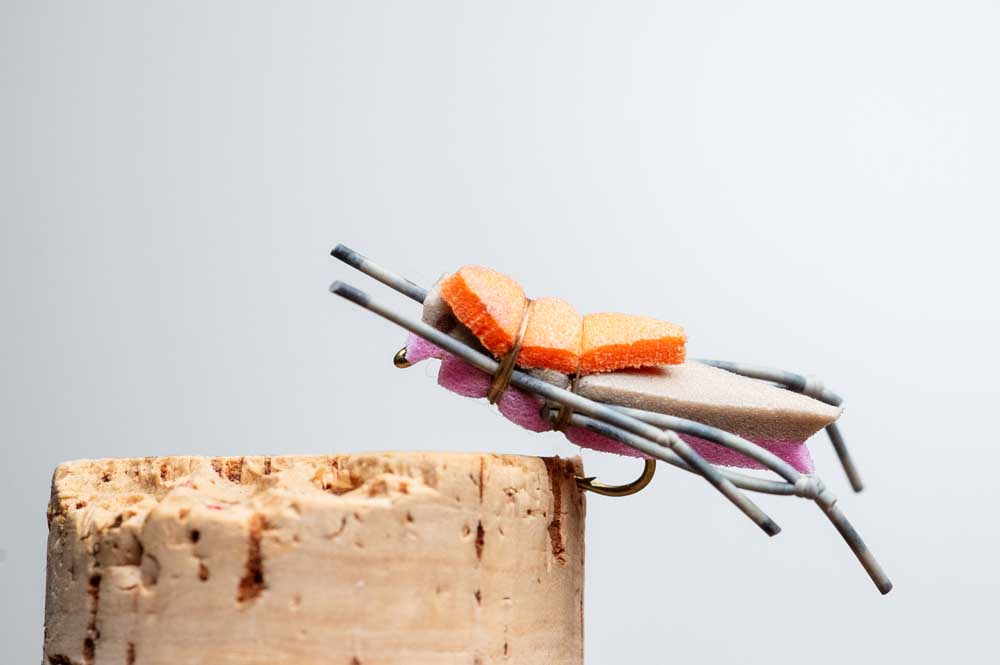Outdoors: The early birds get some great early hunts
Published 7:30 am Friday, September 6, 2024

- Morrish Hopper, courtesy Bend Fly Shop.
Last year’s chukar season was one of the better ones in the last 10 years, but it was just a warmup for this year. Remember all those rains we had early spring? All that moisture set us up for a chukar season to remember.
Before chukar season starts Oct. 12, we get the early bird season. And bird hunters that kick off the season with September dove and forest grouse hunts will get some great hunts to remember.
For me and my pudelpointer Liesl, the 2023-24 season was our last together, and knowing she had a disease that would take her before her time, the hunts were that much sweeter. We started with a trip for collared doves in September and hunted pheasant in Washington in early October. One of the high points was at the Oregon Hunters Association (OHA) youth bird hunt in the third week of October, when the brown dog and I teamed up with Sam King, who brought his English cocker Birdie.
Sam learned to hunt at an OHA youth bird hunt with me a long time ago. Now here he was, giving back to the sport by running his dog for a couple of young hunters.
Forest grouse and dove seasons started on Sept. 1. While a lot of good grouse habitat burned up over the course of the summer — one million acres burned in Central and Eastern Oregon over the last three months — there is still a lot of grouse country to hunt.
Some of the best opportunity in September is for younger hunters, including pheasant, chukar and waterfowl hunts.
Youth hunters ages 17 and under who will have completed hunter education by the time of the event can sign up now for ODFW’s free pheasant hunts happening around the state starting this month. ODFW and partners stock pheasants at these special hunts that give youth a head start on regular upland bird seasons.
In Central Oregon, the closest hunts are on private lands in Madras and in Tygh Valley on the White River Wildlife Area Sept. 14-15.
Visit myodfw.com/articles/youth-pheasant-hunts for the local contact and to find out more details.
But that’s not all. The Bend Chapter of the OHA will hold its Wayne Elliott Memorial Youth Upland Bird Hunt on Oct. 19 at Leaning Tree Property in Powell Butte.
Registration is $10 at the ODFW office at 61374 Parrell Road in Bend. A map is included in the registration packet.
The bird hunt will include a gun safety orientation and training, clay target shooting, following several birds while accompanied by a field safety officer, dog handler, and trained dogs.
Young hunters will be shown how to safely field dress their birds. The hunt requires a hunter education safety card and is open to the public for ages 17 and under. This event will include a homemade meal of elk chili prepared by OHA chapter volunteers. For more information call Kevin Borst at 541-480-7323.
Anyone age 17 or under who wishes to hunt must have proof of hunter education when hunting on land other than their own property, except youths participating in the mentored youth hunting program. To learn more pick up a copy of the Oregon Game Bird Regulations and turn to page 26. To sign up for a hunter education class online, visit myodfw.com.
Liesl’s seventh hunt last season was the 97th of her 10-year career. My friend Gus Smith called before he went back to college and said he wanted to take me chukar hunting. The first time I hunted with him he was 5. Now he was taking me. Gus shot one chukar over his black dog Flick, and Liesl pointed a big wily single and I missed it on a downhill swing.
By this time I had counted Liesl’s hunts in my journals. Hunt No. 98 was for chukar near Tygh Valley. We got a pigeon. On hunt No. 99, she was not smelling birds anymore, her sinuses blocked by the cancer.
She hunted by sight and instinct. On hunt No. 100 we staged a driven shoot at Sage Canyon Preserve near Maupin. When the hunt was over, Liesl pointed one more rooster. I shot it with my camera.
Hunt early and often this season.
Fly-tying Corner
Vulnerability. That’s what a big pond-cruising rainbow understands. Trouble. That’s what a grasshopper is in when the wind blows him on the water.
Ken Morrish’s vision combines carved foam and knotted rubber legs, which are at once the keys to this pattern’s stability and its “live” surface action. With six touchdown contact points in the surface film, any movement transmits energy to the legs and the surface film. And trout are watching.
Craft Morrish’s Hopper with tan 6/0 Unithread on a No. 8 2X long dry fly hook. Glue two sheets of standard 2mm foam together: one tan and one purple. With an Exacto knife, cut out a 1 1/8-inch body. Trim the body with a blunt head and a one-third taper with a two-third taper to a narrow tail. Round out the nose and cut out a mouth. Tip the body over and cut in to the first layer to create a slit for the hook. Set the body aside and create a thread base on the shank. Secure the body with thread.
Create the back legs with two strands to a knotted knee. Tie in second pair of one-strand legs in front of the thorax and extend forward and back. Secure an elongated diamond-shape piece of orange foam to the back of the fly for visibility and finish behind the eye. Add oval shaped eyes with a permanent marker. Use Zap-A-Gap to secure the body to the hook.
— Gary Lewis, For The Bulletin






